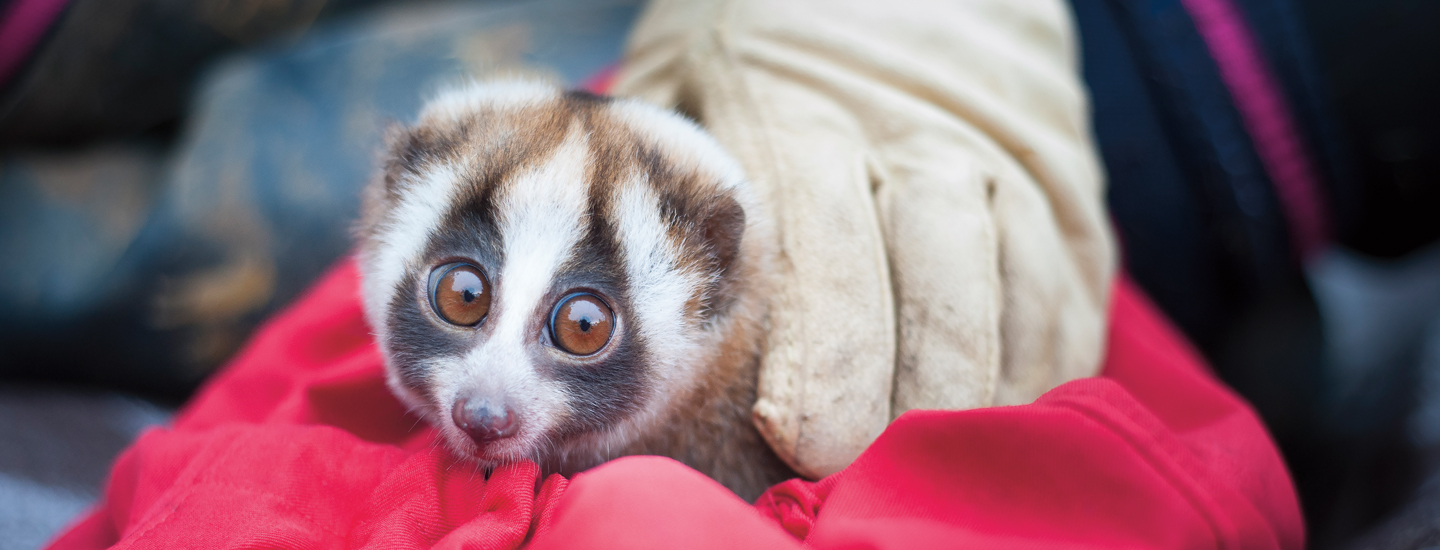Wide-eyed Canon clung tightly to the bars of her tiny cage. Days earlier, she had roamed free in a rainforest in West Java, Indonesia. Now she was locked away. She had been kidnapped by a pet trader.
Wide-eyed Canon huddled in a tiny cage. She clung tightly to the bars. Days earlier, she had roamed free in a rainforest. Her home was in West Java, Indonesia. Now she was locked away. A pet trader had kidnapped her.

